Elizabeth Delisi's Blog, page 9
April 28, 2016
X is for Excess Words
Okay, "excess" doesn't really start with an X, but it sounds like it does! Close enough?
One issue many beginning writers seem to have (as well as some experienced writers!) is using two words when one will do; ten where two will do, etc. For instance, consider this sentence:
"She rose from her chair to a stand, then walked out the door of the room." It works much better as, "She rose and walked out the door." We don't need "from her chair" because, if the author has done his job right, we already know she's sitting in a chair, not on the floor or a bed, so the only place she can rise from is that chair. Similarly, "to a stand" is unnecessary because it's the only thing you can rise to from a seated position. And "of the room" isn't needed, since it's implied in "walked out the door."
Other ways to avoid wordiness include using contractions, streamline descriptions, use your thesaurus to find the one word that says what you mean, make your action segments tight with a minimum of description that slows down the pace.
Today's Tarot deck is the Cosmic Tarot. Here are a couple of sample cards from the deck:

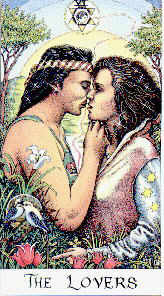 Images courtesy of Aeclectic Tarothttp://www.aeclectic.net/tarot/cards/cosmic/
Images courtesy of Aeclectic Tarothttp://www.aeclectic.net/tarot/cards/cosmic/
I asked when I was most likely to get wordy; in other words, what type of scene would make me babble? The card I drew was The Hermit, and luckily enough, I was able to post a picture of that card above.
The Hermit indicates isolation and solitude, which I'd take to mean I'm most likely to get wordy when I'm writing alone, with no one to proofread and call me on too many words. But it also can mean wisdom, and with that wisdom can come a feeling of cleverness, thinking you're smarter than everyone else. Believing your own writing is exquisite is probably the most likely time I'm wordy! So I'll have to work on being humble.
One issue many beginning writers seem to have (as well as some experienced writers!) is using two words when one will do; ten where two will do, etc. For instance, consider this sentence:
"She rose from her chair to a stand, then walked out the door of the room." It works much better as, "She rose and walked out the door." We don't need "from her chair" because, if the author has done his job right, we already know she's sitting in a chair, not on the floor or a bed, so the only place she can rise from is that chair. Similarly, "to a stand" is unnecessary because it's the only thing you can rise to from a seated position. And "of the room" isn't needed, since it's implied in "walked out the door."
Other ways to avoid wordiness include using contractions, streamline descriptions, use your thesaurus to find the one word that says what you mean, make your action segments tight with a minimum of description that slows down the pace.
Today's Tarot deck is the Cosmic Tarot. Here are a couple of sample cards from the deck:

 Images courtesy of Aeclectic Tarothttp://www.aeclectic.net/tarot/cards/cosmic/
Images courtesy of Aeclectic Tarothttp://www.aeclectic.net/tarot/cards/cosmic/ I asked when I was most likely to get wordy; in other words, what type of scene would make me babble? The card I drew was The Hermit, and luckily enough, I was able to post a picture of that card above.
The Hermit indicates isolation and solitude, which I'd take to mean I'm most likely to get wordy when I'm writing alone, with no one to proofread and call me on too many words. But it also can mean wisdom, and with that wisdom can come a feeling of cleverness, thinking you're smarter than everyone else. Believing your own writing is exquisite is probably the most likely time I'm wordy! So I'll have to work on being humble.
Published on April 28, 2016 08:02
April 27, 2016
W is for Wants and Desires
I've decided W stands for wants and desires...in other words, Goals.
Your characters must have goals they are working toward. They can't just sit around watching life go by. They must want something, and be willing to do whatever it takes to get it. The tension and excitement comes in when one character's goal doesn't mesh with another character's goal.
Your villain must have goals also, just as the hero and heroine do. Even secondary characters should have goals, though not as prominent as the more important characters.
Today's Tarot deck is the Ramses: Tarot of Eternity deck. Here are a couple of cards from this deck.
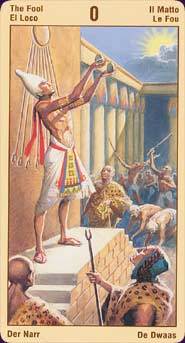
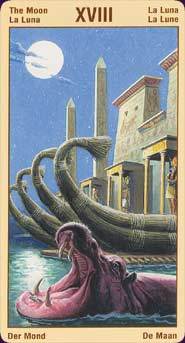
I asked what goals my heroine was working toward, especially those that could come in conflict with either the hero's goals or the villain's. The card I drew is the Seven of Wands. The card is about protecting one's rights or material goods. There is a possibility of theft or fraud. Since the heroine is a real estate rep, as per A is for Action and G is for Genre, she is worried about some type of fraud. Perhaps on the part of her employer, or someone who's selling his/her home or purchasing one. It may be that she wants to avoid blame, but someone is framing her. Perhaps the hero is the law enforcement guy who is investigating. That should provide some good conflict between the two!
Your characters must have goals they are working toward. They can't just sit around watching life go by. They must want something, and be willing to do whatever it takes to get it. The tension and excitement comes in when one character's goal doesn't mesh with another character's goal.
Your villain must have goals also, just as the hero and heroine do. Even secondary characters should have goals, though not as prominent as the more important characters.
Today's Tarot deck is the Ramses: Tarot of Eternity deck. Here are a couple of cards from this deck.


I asked what goals my heroine was working toward, especially those that could come in conflict with either the hero's goals or the villain's. The card I drew is the Seven of Wands. The card is about protecting one's rights or material goods. There is a possibility of theft or fraud. Since the heroine is a real estate rep, as per A is for Action and G is for Genre, she is worried about some type of fraud. Perhaps on the part of her employer, or someone who's selling his/her home or purchasing one. It may be that she wants to avoid blame, but someone is framing her. Perhaps the hero is the law enforcement guy who is investigating. That should provide some good conflict between the two!
Published on April 27, 2016 11:58
April 26, 2016
V is for Villain
We've done a post on the hero and heroine of your book. Now it's time to take a look at the villain.
There are many kinds of villains, ranging from an accidental villain who simply falls in with the wrong crowd, to the amoral sociopath who lets nothing get in his way.
How do you choose the villain for your story? In general, the anxiety level the villain causes should match the tone of your story. You don't want that sociopath in a romantic comedy; nor do you want the accidental teen villain in a gritty murder mystery. You also need to be sure your heroine and hero are able to take on the villain and eventually succeed against him/her, though it may be quite difficult. Thus they must be fairly closely matched in intelligence.
Today's deck is the Prediction Tarot. This was the first tarot deck I ever bought, and though it wasn't the best choice for a beginner, I have fond feelings about it. Here are a couple of sample cards from the deck.
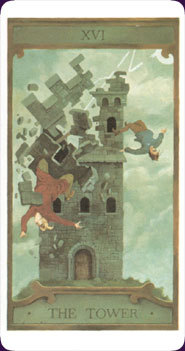
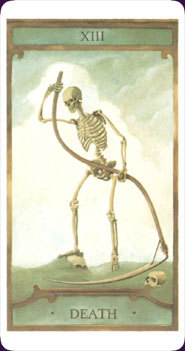 Images courtesy of Aeclectic Tarothttp://www.aeclectic.net/tarot/cards/prediction/
Images courtesy of Aeclectic Tarothttp://www.aeclectic.net/tarot/cards/prediction/
I asked what the villain in my work in progress should be like. The card I drew is the Two of Coins. This card indicates to me the villain has gone through a recent breakup, either at work or at home. This person has no ability to deal with the situation, no patience, and thus strikes out at everyone, taking his/her rage out on whomever crosses his/her path. What's your villain like?
There are many kinds of villains, ranging from an accidental villain who simply falls in with the wrong crowd, to the amoral sociopath who lets nothing get in his way.
How do you choose the villain for your story? In general, the anxiety level the villain causes should match the tone of your story. You don't want that sociopath in a romantic comedy; nor do you want the accidental teen villain in a gritty murder mystery. You also need to be sure your heroine and hero are able to take on the villain and eventually succeed against him/her, though it may be quite difficult. Thus they must be fairly closely matched in intelligence.
Today's deck is the Prediction Tarot. This was the first tarot deck I ever bought, and though it wasn't the best choice for a beginner, I have fond feelings about it. Here are a couple of sample cards from the deck.

 Images courtesy of Aeclectic Tarothttp://www.aeclectic.net/tarot/cards/prediction/
Images courtesy of Aeclectic Tarothttp://www.aeclectic.net/tarot/cards/prediction/ I asked what the villain in my work in progress should be like. The card I drew is the Two of Coins. This card indicates to me the villain has gone through a recent breakup, either at work or at home. This person has no ability to deal with the situation, no patience, and thus strikes out at everyone, taking his/her rage out on whomever crosses his/her path. What's your villain like?
Published on April 26, 2016 08:02
U is for Understand Your Audience
I've heard more than once that writers should "write to the market." While it's important to know what's popular now and what isn't, which trends are rising and which trends are falling, "write to the market" implies twisting your writing around to match what's selling.
I've never subscribed to that theory. If you try to write something you don't love, just because it's popular, your prose is bound to suffer. Instead, I think you need to write what makes your heart beat faster and time whiz by when you're working on your novel.
But...and this is a big but...once you know what you want to write, you have to determine what genre your story is, and then study your audience. What are the conventions for that genre? What will readers expect? What do you have to include, and what can you get away with when stretching the boundaries?
For instance, a romance novel can have a female/male couple, a female/female couple, or a male/male couple. They can live anywhere, work at any job. But the couple must be together by book's end...in other words, there must be an HEA, or Happily Ever After.
Today's Tarot deck is the Universal Waite Tarot. Here are a couple of sample cards from this deck.
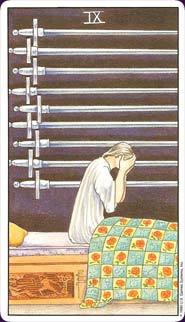
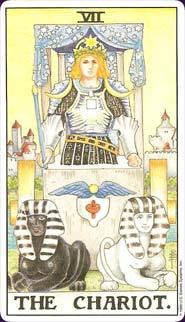 Images courtesy of Aeclectic Tarothttp://www.aeclectic.net/tarot/cards/universal-waite/
Images courtesy of Aeclectic Tarothttp://www.aeclectic.net/tarot/cards/universal-waite/
I asked what I needed to know about my audience for the current work in progress. The card I drew was the Two of Wands. This card tells me my audience is mature, bold and courageous. This group has clear-cut goals and needs, and they won't hesitate to pursue them. They will expect to see a heroine and hero with these same strong suits, and won't have patience for a wilting flower. The characters may make mistakes, but they will charge ahead and eventually succeed.
I've never subscribed to that theory. If you try to write something you don't love, just because it's popular, your prose is bound to suffer. Instead, I think you need to write what makes your heart beat faster and time whiz by when you're working on your novel.
But...and this is a big but...once you know what you want to write, you have to determine what genre your story is, and then study your audience. What are the conventions for that genre? What will readers expect? What do you have to include, and what can you get away with when stretching the boundaries?
For instance, a romance novel can have a female/male couple, a female/female couple, or a male/male couple. They can live anywhere, work at any job. But the couple must be together by book's end...in other words, there must be an HEA, or Happily Ever After.
Today's Tarot deck is the Universal Waite Tarot. Here are a couple of sample cards from this deck.

 Images courtesy of Aeclectic Tarothttp://www.aeclectic.net/tarot/cards/universal-waite/
Images courtesy of Aeclectic Tarothttp://www.aeclectic.net/tarot/cards/universal-waite/ I asked what I needed to know about my audience for the current work in progress. The card I drew was the Two of Wands. This card tells me my audience is mature, bold and courageous. This group has clear-cut goals and needs, and they won't hesitate to pursue them. They will expect to see a heroine and hero with these same strong suits, and won't have patience for a wilting flower. The characters may make mistakes, but they will charge ahead and eventually succeed.
Published on April 26, 2016 07:42
April 23, 2016
T is for Tension
Tension is a vital part of any novel, regardless of genre. An online dictionary defines tension as:
"mental or emotional strain; intense, suppressed suspense, anxiety, or excitement." This anxiety, excitement and suspense is paramount to make your reader keep reading. Like my post on "Q is for Question at Chapter's End," you want to leave something unanswered, something hanging, at the end of most, if not all, chapters. But tension is good within a chapter or scene, also. Example: your hero and heroine have an argument and it looks like they may break up. This isn't the end of the chapter or scene...perhaps the hero's mother arrives, or the heroine's child comes home from school, so continuing the argument must wait until later. But the reader will still feel the suspense and emotional strain of wondering if they will get past this roadblock--if you've done your job right! Today's Tarot deck is the Viking Tarot. Here are a couple of sample cards from the deck: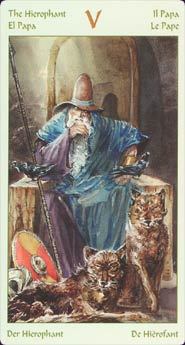
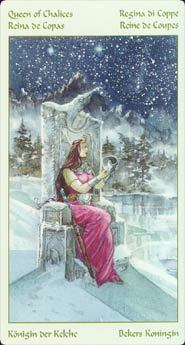 Images courtesy of Aeclectic Tarothttp://www.aeclectic.net/tarot/cards/vikings/ I asked what I could do to up the tension in my manuscript. The card I drew was the Knight of Swords. This card indicates courage, but also anger and destruction. I interpret this as meaning one way to up the tension is to have something destroyed. It could be physical destruction and unintended, like the heroine has an accident while driving the hero's car. It could be physical destruction and intentional, such as the villain smashing the windows in the heroine's home. Or it could be emotional destruction, like when the hero thinks he's lost the heroine and he is devastated by his perceived loss. Anything that ups the tension in the story will keep your reader avidly turning page after page!
Images courtesy of Aeclectic Tarothttp://www.aeclectic.net/tarot/cards/vikings/ I asked what I could do to up the tension in my manuscript. The card I drew was the Knight of Swords. This card indicates courage, but also anger and destruction. I interpret this as meaning one way to up the tension is to have something destroyed. It could be physical destruction and unintended, like the heroine has an accident while driving the hero's car. It could be physical destruction and intentional, such as the villain smashing the windows in the heroine's home. Or it could be emotional destruction, like when the hero thinks he's lost the heroine and he is devastated by his perceived loss. Anything that ups the tension in the story will keep your reader avidly turning page after page!
"mental or emotional strain; intense, suppressed suspense, anxiety, or excitement." This anxiety, excitement and suspense is paramount to make your reader keep reading. Like my post on "Q is for Question at Chapter's End," you want to leave something unanswered, something hanging, at the end of most, if not all, chapters. But tension is good within a chapter or scene, also. Example: your hero and heroine have an argument and it looks like they may break up. This isn't the end of the chapter or scene...perhaps the hero's mother arrives, or the heroine's child comes home from school, so continuing the argument must wait until later. But the reader will still feel the suspense and emotional strain of wondering if they will get past this roadblock--if you've done your job right! Today's Tarot deck is the Viking Tarot. Here are a couple of sample cards from the deck:

 Images courtesy of Aeclectic Tarothttp://www.aeclectic.net/tarot/cards/vikings/ I asked what I could do to up the tension in my manuscript. The card I drew was the Knight of Swords. This card indicates courage, but also anger and destruction. I interpret this as meaning one way to up the tension is to have something destroyed. It could be physical destruction and unintended, like the heroine has an accident while driving the hero's car. It could be physical destruction and intentional, such as the villain smashing the windows in the heroine's home. Or it could be emotional destruction, like when the hero thinks he's lost the heroine and he is devastated by his perceived loss. Anything that ups the tension in the story will keep your reader avidly turning page after page!
Images courtesy of Aeclectic Tarothttp://www.aeclectic.net/tarot/cards/vikings/ I asked what I could do to up the tension in my manuscript. The card I drew was the Knight of Swords. This card indicates courage, but also anger and destruction. I interpret this as meaning one way to up the tension is to have something destroyed. It could be physical destruction and unintended, like the heroine has an accident while driving the hero's car. It could be physical destruction and intentional, such as the villain smashing the windows in the heroine's home. Or it could be emotional destruction, like when the hero thinks he's lost the heroine and he is devastated by his perceived loss. Anything that ups the tension in the story will keep your reader avidly turning page after page!
Published on April 23, 2016 08:58
April 22, 2016
S is for Setting
S is indeed for setting. Ordinarily, that would be one of the first things you decide on, but with this A-Z format, "S" comes close to the end. ;-)
Setting is vital, so it doesn't seem your characters are existing in a vacuum. But this is an area where less is more. A well-chosen sentence or two that describe a few important details is better than a page full of unimportant details. Your reader needs to "see" the setting in his/her mind, but they don't want a listing of every pencil and dust bunny in the room. They prefer to put their own spin on it.
Today's Tarot deck is the Paulina Tarot. Here are a couple of sample images from the deck:
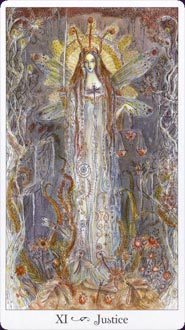
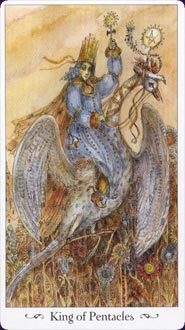 Images courtesy of Aeclectic Tarothttp://www.aeclectic.net/tarot/cards/paulina/
Images courtesy of Aeclectic Tarothttp://www.aeclectic.net/tarot/cards/paulina/
I asked the Tarot what setting would work best for the story I'm working on. The card I drew was the Six of Wands. It shows a boy riding what looks like a dragon, while penguins watch from the ground. Yet it's clearly not the region where you'd find penguins. I'm going to interpret this as meaning my setting should be incongruous...somewhere you wouldn't ordinarily expect the story to take place. For instance, a rodeo in New Jersey. Or it could be a setting that doesn't mesh with the main character, i.e. a surfer in Montana. This will add an extra fun touch to the story and make it a little different than the norm.
Setting is vital, so it doesn't seem your characters are existing in a vacuum. But this is an area where less is more. A well-chosen sentence or two that describe a few important details is better than a page full of unimportant details. Your reader needs to "see" the setting in his/her mind, but they don't want a listing of every pencil and dust bunny in the room. They prefer to put their own spin on it.
Today's Tarot deck is the Paulina Tarot. Here are a couple of sample images from the deck:

 Images courtesy of Aeclectic Tarothttp://www.aeclectic.net/tarot/cards/paulina/
Images courtesy of Aeclectic Tarothttp://www.aeclectic.net/tarot/cards/paulina/ I asked the Tarot what setting would work best for the story I'm working on. The card I drew was the Six of Wands. It shows a boy riding what looks like a dragon, while penguins watch from the ground. Yet it's clearly not the region where you'd find penguins. I'm going to interpret this as meaning my setting should be incongruous...somewhere you wouldn't ordinarily expect the story to take place. For instance, a rodeo in New Jersey. Or it could be a setting that doesn't mesh with the main character, i.e. a surfer in Montana. This will add an extra fun touch to the story and make it a little different than the norm.
Published on April 22, 2016 09:25
April 21, 2016
R is for Revision
R is for that dreaded word, Revision. Sure, once you have a publisher for your work, you'll have an editor who will work with you to make your book the best it can be. But before you even submit to a publisher, YOU have to revise, revise, revise until the book is as good as YOU can make it.
Revising takes a different kind of skill than writing. You have to be able to look at your work objectively. You can't fall under the spell of your prose but forget to check if you've spelled things right, punctuated properly, avoided repetition of your favorite phrases, etc. Not to mention making sure the story line makes sense, the dialogue is realistic, the hero and heroine not perfect but compelling.
Today's Tarot deck is the Winged Spirit Tarot. Here are a couple of sample cards from the deck:
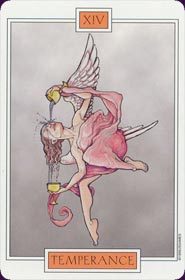
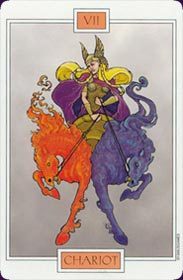 Images courtesy of Aeclectic Tarothttp://www.aeclectic.net/tarot/cards/winged-spirit/
Images courtesy of Aeclectic Tarothttp://www.aeclectic.net/tarot/cards/winged-spirit/
I asked the Tarot to show me the area I'm most likely to need to revise. The card I drew is the King of Wands. This card represents creativity and imagination, a dynamic artistic nature. I interpret this to mean the biggest problem I may find in my writing and need to revise is my lovely prose. Just like K is for Kill Your Darlings, I'm likely to get carried away with the beauty of my words, the mellifluous sound of the prose, to the point of overdoing it. I need to make sure the beauty advances the story line, not just my ego!
Revising takes a different kind of skill than writing. You have to be able to look at your work objectively. You can't fall under the spell of your prose but forget to check if you've spelled things right, punctuated properly, avoided repetition of your favorite phrases, etc. Not to mention making sure the story line makes sense, the dialogue is realistic, the hero and heroine not perfect but compelling.
Today's Tarot deck is the Winged Spirit Tarot. Here are a couple of sample cards from the deck:

 Images courtesy of Aeclectic Tarothttp://www.aeclectic.net/tarot/cards/winged-spirit/
Images courtesy of Aeclectic Tarothttp://www.aeclectic.net/tarot/cards/winged-spirit/ I asked the Tarot to show me the area I'm most likely to need to revise. The card I drew is the King of Wands. This card represents creativity and imagination, a dynamic artistic nature. I interpret this to mean the biggest problem I may find in my writing and need to revise is my lovely prose. Just like K is for Kill Your Darlings, I'm likely to get carried away with the beauty of my words, the mellifluous sound of the prose, to the point of overdoing it. I need to make sure the beauty advances the story line, not just my ego!
Published on April 21, 2016 14:08
April 20, 2016
Q is for Question at Chapter's End
I'm pleased to have come up with something for Q! So, Q is for a Question at Chapter's End. In other words, leaving something up in the air at the end of the chapter, something that leaves the reader wanting to know the answer. Sounds good, right?
If you watch soaps, you'll see they do this at the end of virtually every scene. For example, here are three ways to end a chapter or scene:
1) "Will you marry me?" John asked Denise.
"Yes!" said Denise.
2) "Will you marry me?" John asked Denise.
3) John had a question to ask Denise.
Version #1 works only if it's the end of the book. After all, since Denise said "Yes," there's no suspense. No reason to keep reading.
Version #3 doesn't work because it's too general. We have no idea what he's going to ask, so there's no real interest in whatever her answer is.
Version #2 works the best. John has asked the question, and not yet received an answer. We'll want to keep reading to find out if she says "Yes" or "No."
Today's Tarot deck is the Ghost Tarot. Here are a couple of sample cards from the deck.
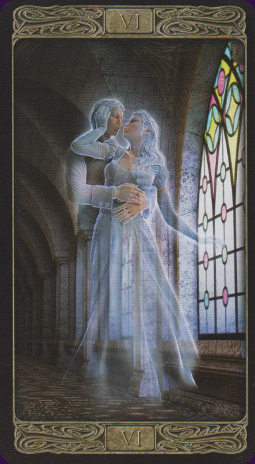
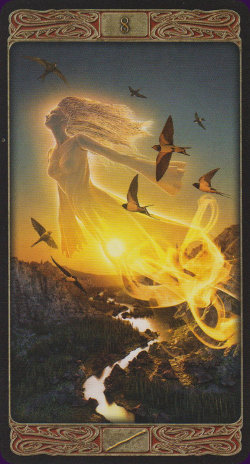
Images courtesy of Aeclectic Tarothttp://www.aeclectic.net/tarot/cards/ghost-tarot/
I asked what kind of question for a chapter's end would be most likely to keep the reader reading. The card I drew was the 6 of Pentacles. And luckily enough, Aeclectic Tarot has a picture of that card:
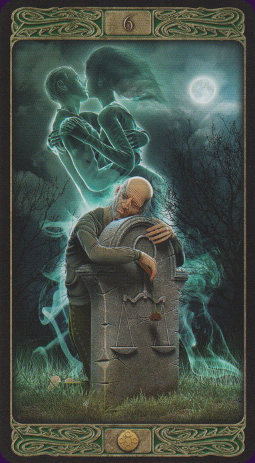
This card indicates a painful separation, loss of a loved one, remembering a happier time. I'd interpret this to mean the man and woman in my romance novel have broken up and are both facing loneliness but don't know how to win the other back. I'd leave the question hanging of, will they find a way to get back together, or not?
If you watch soaps, you'll see they do this at the end of virtually every scene. For example, here are three ways to end a chapter or scene:
1) "Will you marry me?" John asked Denise.
"Yes!" said Denise.
2) "Will you marry me?" John asked Denise.
3) John had a question to ask Denise.
Version #1 works only if it's the end of the book. After all, since Denise said "Yes," there's no suspense. No reason to keep reading.
Version #3 doesn't work because it's too general. We have no idea what he's going to ask, so there's no real interest in whatever her answer is.
Version #2 works the best. John has asked the question, and not yet received an answer. We'll want to keep reading to find out if she says "Yes" or "No."
Today's Tarot deck is the Ghost Tarot. Here are a couple of sample cards from the deck.


Images courtesy of Aeclectic Tarothttp://www.aeclectic.net/tarot/cards/ghost-tarot/
I asked what kind of question for a chapter's end would be most likely to keep the reader reading. The card I drew was the 6 of Pentacles. And luckily enough, Aeclectic Tarot has a picture of that card:

This card indicates a painful separation, loss of a loved one, remembering a happier time. I'd interpret this to mean the man and woman in my romance novel have broken up and are both facing loneliness but don't know how to win the other back. I'd leave the question hanging of, will they find a way to get back together, or not?
Published on April 20, 2016 07:35
April 19, 2016
P is for POV
The most obvious "P" item is POV, or Point of View. If you've been writing for any length of time at all, you'll have heard advice about POV in a couple of ways. First is how the character's thoughts, dialogue and activity are presented. You have the choice of First Person:
I went to the cupboard, but it was bare. "But I'm starving!" I moaned,
Or Third Person:
Sue went to the cupboard, but it was bare. "But I'm starving!" she moaned.
Most books use third person, because first person not only reads as if the reader were the actual character in the book, but it also makes it difficult or impossible to show any other character's POV than the narrator's. But some writers go with first person as they feel it brings the reader closer.
The second type of POV is figuring out which character in a particular scene is the narrator of that scene; in other words, the one telling what happens in that scene. Examples:
Sue went to the cupboard, but it was bare. In fact, she saw nothing edible in the kitchen at all.
"But I'm hungry!" Jane whined.
Sue rolled her eyes. Jane was such a baby.
In the above passage, we're hearing Sue narrate what's happening. We hear and see only what she hears and sees. Thus we don't know what Jane thinks, only what she says. If you do this:
Sue went to the cupboard, but it was bare. In fact, she saw nothing edible in the kitchen at all.
"But I'm hungry!" Jane whined. She just knew Sue was hiding food somewhere.
Sue rolled her eyes. Jane was such a baby.
Now you're "head-hopping," i.e. moving from one character's thoughts to another. Don't do that! At least, not within a single scene. It's okay to change narrators when you change scenes.
I'm going to ask the tarot today to help me choose a main narrator for my story. Today's tarot deck is the Nigel Jackson Tarot--one of my favorites. Here are a couple of sample cards from the deck:
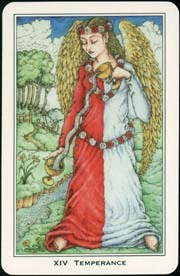
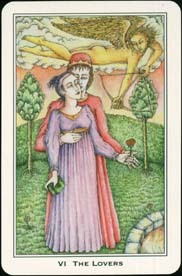
Images courtesy of Aeclectic Tarothttp://www.aeclectic.net/tarot/cards/nigel-jackson/
The card I drew is the Hanged Man. This card tells me my main narrator should be someone seeking wisdom, who is going to go through a trial before achieving his/her goal. Self-sacrifice and a reversal of attitude will come about before the narrator achieves serenity.
So it sounds like my narrator will have quite an obstacle to overcome. What about yours?
I went to the cupboard, but it was bare. "But I'm starving!" I moaned,
Or Third Person:
Sue went to the cupboard, but it was bare. "But I'm starving!" she moaned.
Most books use third person, because first person not only reads as if the reader were the actual character in the book, but it also makes it difficult or impossible to show any other character's POV than the narrator's. But some writers go with first person as they feel it brings the reader closer.
The second type of POV is figuring out which character in a particular scene is the narrator of that scene; in other words, the one telling what happens in that scene. Examples:
Sue went to the cupboard, but it was bare. In fact, she saw nothing edible in the kitchen at all.
"But I'm hungry!" Jane whined.
Sue rolled her eyes. Jane was such a baby.
In the above passage, we're hearing Sue narrate what's happening. We hear and see only what she hears and sees. Thus we don't know what Jane thinks, only what she says. If you do this:
Sue went to the cupboard, but it was bare. In fact, she saw nothing edible in the kitchen at all.
"But I'm hungry!" Jane whined. She just knew Sue was hiding food somewhere.
Sue rolled her eyes. Jane was such a baby.
Now you're "head-hopping," i.e. moving from one character's thoughts to another. Don't do that! At least, not within a single scene. It's okay to change narrators when you change scenes.
I'm going to ask the tarot today to help me choose a main narrator for my story. Today's tarot deck is the Nigel Jackson Tarot--one of my favorites. Here are a couple of sample cards from the deck:


Images courtesy of Aeclectic Tarothttp://www.aeclectic.net/tarot/cards/nigel-jackson/
The card I drew is the Hanged Man. This card tells me my main narrator should be someone seeking wisdom, who is going to go through a trial before achieving his/her goal. Self-sacrifice and a reversal of attitude will come about before the narrator achieves serenity.
So it sounds like my narrator will have quite an obstacle to overcome. What about yours?
Published on April 19, 2016 08:24
April 18, 2016
O is for Outline
To outline, or not to outline? That is the question. Many authors swear by them, while others prefer writing by the seat of their pants.
If you ask authors who outline what kind of outline they use, you'll get as many answers as there are authors. Some prefer the formal outline they learned in school, with Roman numerals and subsections. Others write one or two sentences on a 3x5 card for each scene in the book, while still others write the outline in a brief, "Cliffs Notes" prose format.
I'm an outliner. Can you see my hand raised? I like to write 1-2 paragraphs for each scene, telling the highlights of what happen in that scene. If a beautiful bit of description or compelling dialogue comes to me, I put it down there so I don't lose it. If I come to something I need to research, I put a note there for later. And most importantly, if the plot isn't going right or I come up with a better version, I simply make the appropriate change in the outline. That way it's still useful for writing...and also can be valuable when writing a blurb.
Today I'm going to see what the Tarot thinks about outlining. Today's deck is the Druid Craft Tarot. Here are a couple of sample cards from the deck.
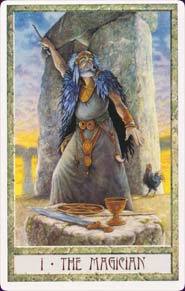
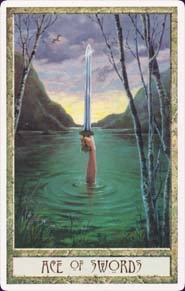 Images courtesy of Aeclectic Tarothttp://www.aeclectic.net/tarot/cards/druidcraft/
Images courtesy of Aeclectic Tarothttp://www.aeclectic.net/tarot/cards/druidcraft/
The card I drew today is the Princess of Swords. This card speaks of a person who aloof and detached, which is sometimes useful but other times not. This person -- me? -- is good with communication skills, enjoys intellectual challenges, and loves to learn. A fresh viewpoint is just what the person this card represents needs. Maybe I should take a look at my outlining method and see if I can tweak it to make it suit me better! How about you?
If you ask authors who outline what kind of outline they use, you'll get as many answers as there are authors. Some prefer the formal outline they learned in school, with Roman numerals and subsections. Others write one or two sentences on a 3x5 card for each scene in the book, while still others write the outline in a brief, "Cliffs Notes" prose format.
I'm an outliner. Can you see my hand raised? I like to write 1-2 paragraphs for each scene, telling the highlights of what happen in that scene. If a beautiful bit of description or compelling dialogue comes to me, I put it down there so I don't lose it. If I come to something I need to research, I put a note there for later. And most importantly, if the plot isn't going right or I come up with a better version, I simply make the appropriate change in the outline. That way it's still useful for writing...and also can be valuable when writing a blurb.
Today I'm going to see what the Tarot thinks about outlining. Today's deck is the Druid Craft Tarot. Here are a couple of sample cards from the deck.

 Images courtesy of Aeclectic Tarothttp://www.aeclectic.net/tarot/cards/druidcraft/
Images courtesy of Aeclectic Tarothttp://www.aeclectic.net/tarot/cards/druidcraft/ The card I drew today is the Princess of Swords. This card speaks of a person who aloof and detached, which is sometimes useful but other times not. This person -- me? -- is good with communication skills, enjoys intellectual challenges, and loves to learn. A fresh viewpoint is just what the person this card represents needs. Maybe I should take a look at my outlining method and see if I can tweak it to make it suit me better! How about you?
Published on April 18, 2016 10:08



